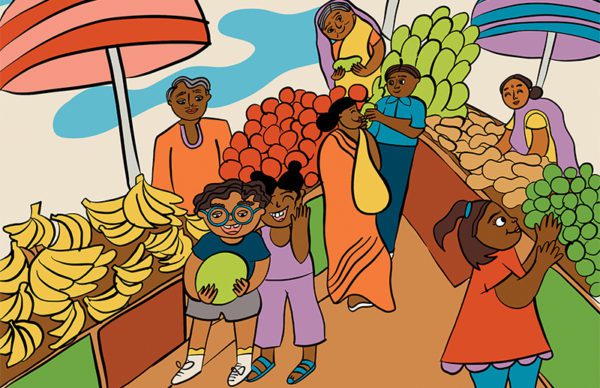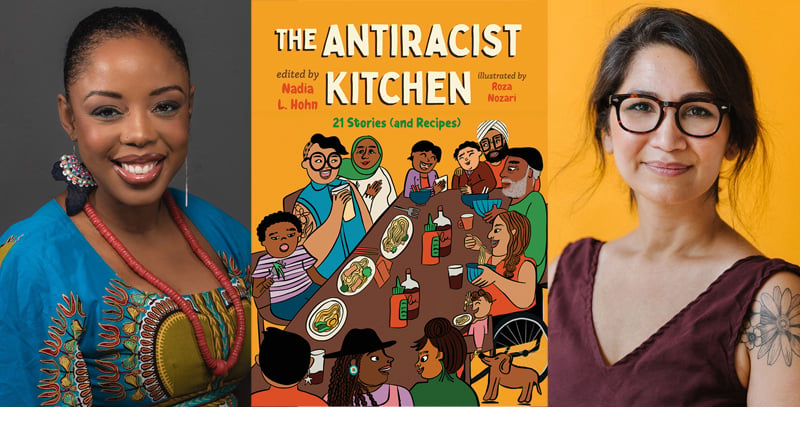When Nadia L. Hohn, author of the Malaika series, first started writing children’s books nearly a decade ago, there weren’t many traditionally published BIPOC authors and illustrators. Though that is changing, Hohn didn’t see any acknowledgement of this shift, and she wanted to create a compendium similar to Meet Canadian Authors & Illustrators: 50 creators of children’s books, published by Scholastic in 1994. So, in 2019, Hohn started to look into which publishers she might approach about an anthology. Then, the murder of George Floyd on May 25, 2020, changed the landscape. “There was a huge interest in DI [diversity and inclusion] from every industry, and to be honest, it was a bit overwhelming,” Hohn recalls. “I thought, ‘Wow, where was this before?’”
Hohn, who has a master of education in sociology and equity studies, feels fairly comfortable with diversity and inclusion material, but as a teacher, she knew that resources for kids on how to do antiracist work were sorely lacking. The newfound interest from publishers and the dire need for materials coupled with her desire to one day write a cookbook were the springboard for The Antiracist Kitchen: 21 Stories (and Recipes) (Orca Book Publishers, out this month).
The Antiracist Kitchen, illustrated by Roza Nozari and with a foreword by Ainara Alleyne, is an anthology of stories each coupled with a recipe near and dear to the writer’s heart. Divided into four parts – reclaim, resist, restore, and rejoice – it boasts essays for a middle-grade audience from both Canadian and U.S. creators. Hohn made the decision to scrap her original idea of including only Canadian contributors because the dialogue around antiracism was not only taking place in Canada. “I’ve always wanted us to have conversations as BIPOC authors and illustrators with U.S. folks because our circles are similar, and I wanted to find a way to bring them together,” Hohn said. “The entries in The Antiracist Kitchen came out of this idea of sharing stories, which young people, educators, and parents can access, but also centring it around food because it’s universal.”
Hohn began reaching out to contributors during the early days of the COVID-19 pandemic, a time that gave rise to a civil rights movement in reaction to anti-Black racism, anti-Asian hate, a shooting outside of a Toronto mosque, the discovery of unmarked graves at the sites of former residential schools, and book bans. The tense environment resulted in many contributors declining to participate. Despite the setback, Hohn didn’t waver from her aim to have representation from different ethnicities and experiences: she picked outside the box to include contributors that weren’t kidlit creators.

Illustration: Roza Nozari
Hohn, who keeps abreast of book bans, is cognizant that The Antiracist Kitchen may be a target. “I recognize it might be banned. In fact, I spent some time with Black authors recently, and one of them said this book is amazing, but it could be banned just because of the title,” Hohn recalls. “I’m not going to change the title or water it down. This is what the book is about.” Her sincere hope is that the readers who need this book will be able to find it.
The Antiracist Kitchen is Hohn’s first foray as an editor. It’s a role she loved and likens to cooking, pulling in the ingredients, pulling in the flavours. “I felt my role was as the holder of stories, in a way protecting them,” Hohn says. “They’re so private and personal, and some of these recipes are from Mom. They are family recipes so I felt very protective.”
Part of the editing experience was ensuring The Antiracist Kitchen was kid friendly. Hohn made sure to include a glossary for such terms as white supremacy and colonization at the back of the book in an effort to bring kids into the conversation about identity.
The shame racialized kids are taught to feel about their skin, eyes, hair, headdresses, and names can lead them to want to change those features to be more socially acceptable. Hohn believes ownership of identity comes from recognizing and celebrating the beauty of the differences and of the cultures. It’s an atmosphere she fosters in her classroom, which is 95 per cent children of colour and a number of refugees. “I want kids to walk tall and be proud of who they are,” Hohn said. “I want them to see the recognition in these stories.”
For Hohn, The Antiracist Kitchen is more than simply one thing. “It’s not just the stories, it’s the food. It’s not just the food, it’s the pictures of the food. It’s not just the pictures of the food, it’s the illustrations. It’s also building a community.”
l to r: Nadia L. Hohn and Roza Nozari

 Contact us via email
Contact us via email

